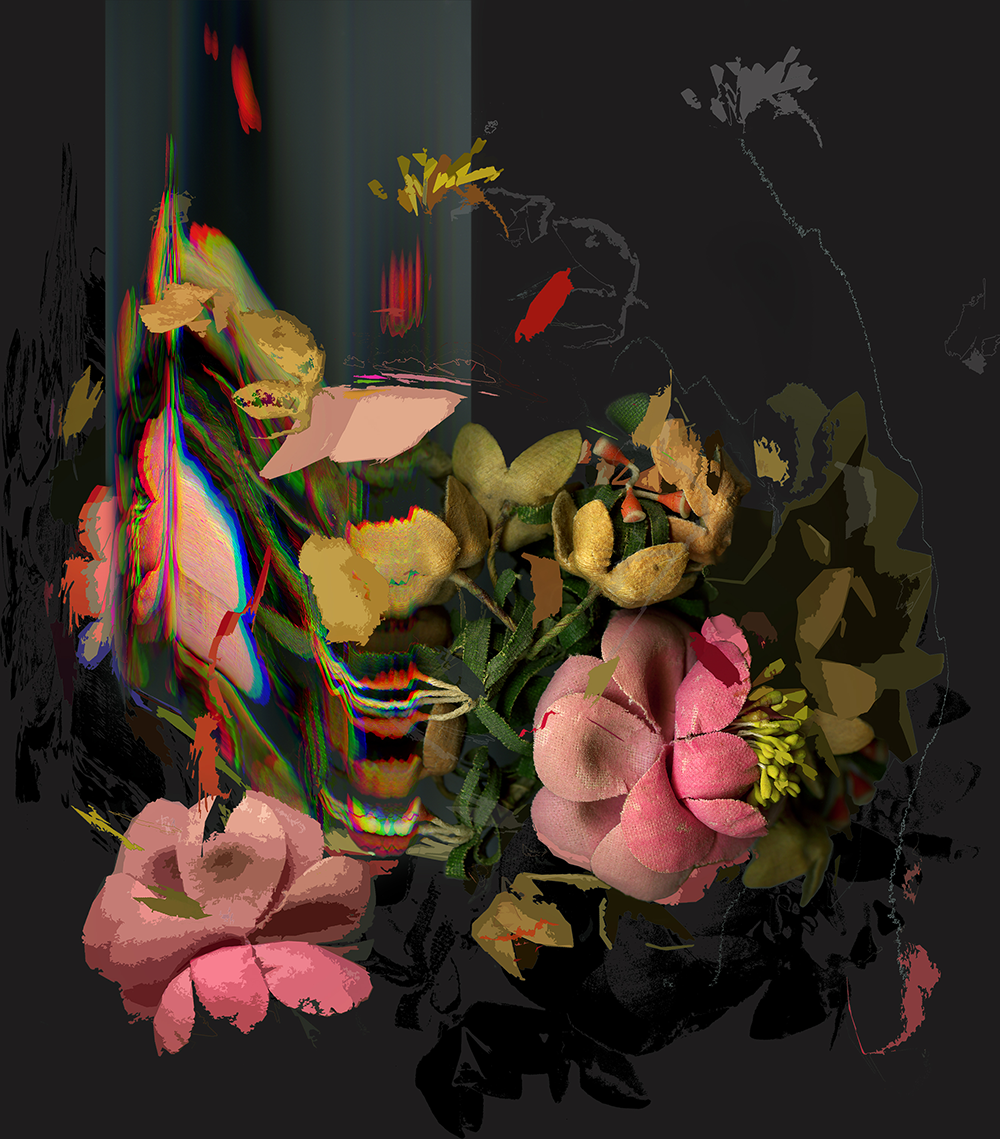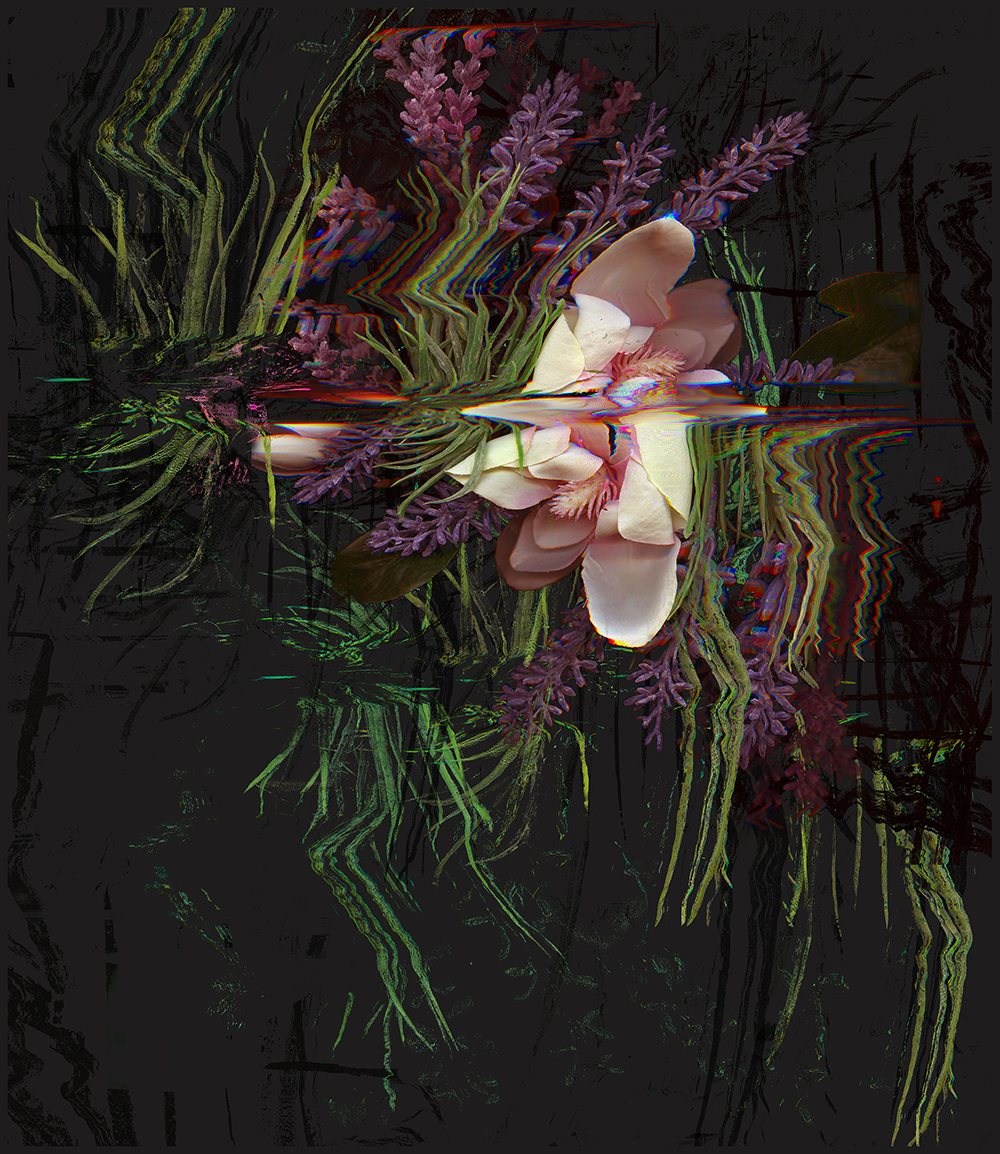In 2011, Melanie Willhide experienced the theft of her computer and back-up drives. Once these items were recovered, she discovered her files had been corrupted. Rather than abort the project she was working on, she embraced the glitches now embedded in her images and used these distortions and fractures as the basis for a new body of work that engaged with the space between abstraction and representation. In her latest digital images, “Elegy of the Garden” she continues these investigations, now using flowers, some real, others artificial, to comment on climate change and the pending environmental crisis.
Using a camera and a hand scanner, Willhide captures the colors, shapes and textures of the flowers and then digitally combines them, breaking them apart, tracing, extending and reshaping their various parts. These fragments are placed into unrecognizable environments filled with ambiguous shadows and heightened colors that suggest undersea worlds or celestial expanses. Her constructed images are dynamic compositions that interweave actual flowers with facsimiles. The inevitability of wilt and decay of the real, is emphasized through her manipulations as the plants are reduced to off-colored pixels.
In Dull Drought Distanced Dear (2020) Willhide uses faux flowers. This distorted arrangement sits above a deep gray background surrounded by vertical streaks that suggest movement, in addition to red/green/blue and cyan/magenta/yellow artifacts that invade the composition and as digital glitches. While the flowers in Dull Drought Distanced Dear are obviously artificial, the white petals and purple buds with differently hued green stems in Our Sighs Into Nothingness (2020) are combined to create a vertiginous landscape that extends both horizontally and vertically across the composition like an alien reflection in murky waters. The disjointed flowers feel both drawn and blown apart as they hover in digitized space.

Melanie Willhide, Dull Drought Distanced Dear, 2020, Archival Pigment Print. Courtesy Von Lintel Gallery.
The flowers within Thread the Dews all Night (2022) and Whether by Day Abducted (2021) have been transformed into seductive, albeit uncharacteristic shapes and colors that reference natural forms abstracted through Willhide’s skilled digital manipulations. She carefully layers what appear to be painted gestures with black shadows as well as delicately traced lines. The floral forms in Shroud of Stars (2021) have been transformed into flat areas of color, again emphasizing the abstracted aspects of the composition. In the center of The Quiet Persistent Rain (2022), it is possible to make out the delicate forms of the light purple/pink flower with its translucent white pistil. In this image she surrounds the original with enlargements of different opacities to create a sea of floating flower parts combined with delicate white outlines of the plants, all atop an opaque dark gray background.
In Willhide’s digital constructions, the more one looks, the more one sees. These photographs are not the expected depictions of flowers in nature, rather they suggest rogue environments that have undergone perplexing transformations. Though beautiful, they allude to seemingly inevitable climate dangers as the artist infuses the work with an uncanny and unsettling aura. Within her “Elegy of the Garden,” there is both hope and foreboding.


